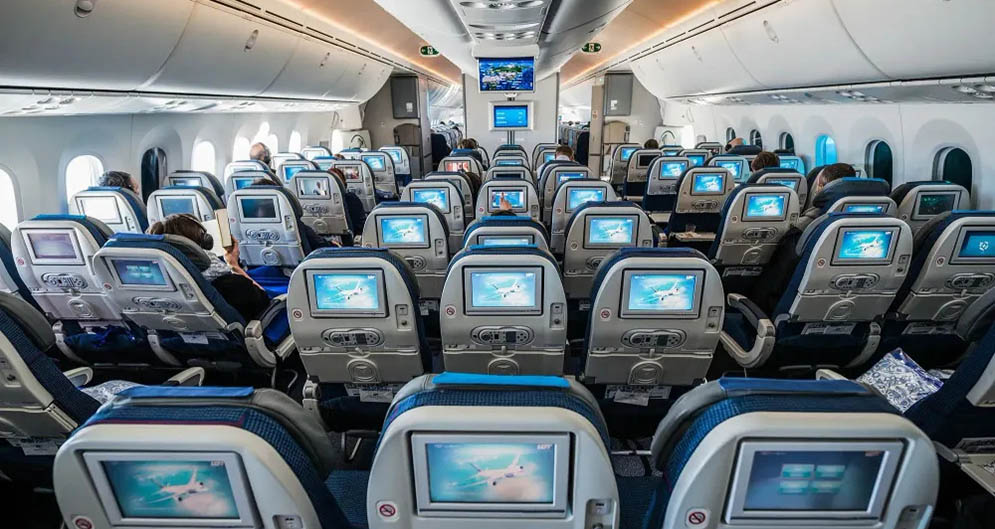Orlando, known for its sun-drenched theme parks, vibrant cultural scenes, and warm Southern hospitality, draws millions of travelers each year. Whether you’re planning a family vacation to world-famous attractions or a solo getaway to explore the city’s hidden gems, getting there comfortably starts with smart flight planning. Orlando International Airport (MCO), one of the busiest airports in the U.S., serves as a key hub for both domestic and international travel. But booking your flight isn’t just about grabbing the first deal you see—it’s about strategy, timing, and preparation. From choosing the right travel dates and airlines to navigating fare classes and baggage rules, this comprehensive guide will help you secure the best flight experience for your Orlando adventure.
1. Why You Need a Smart Booking Strategy
Orlando is one of the most visited cities in the United States, drawing travelers year-round for its world-famous theme parks, convention centers, and sunny climate. This popularity comes with high demand for flights, especially around school breaks, holiday seasons, and major events. As a result, fares can fluctuate quickly—sometimes within hours. Having a smart booking strategy helps you stay ahead of these changes and secure the best prices before they spike.
Orlando International Airport (MCO) is served by nearly every major U.S. airline, offering an extensive mix of direct and connecting flight options. If you value time and convenience, nonstop flights from hubs like New York, Chicago, Dallas, or Los Angeles are widely available. But if you’re traveling on a tighter budget, flights with layovers from nearby secondary airports can often provide significant savings—sometimes hundreds of dollars less than peak-time direct routes.
Flexibility is key. Adjusting your departure or return date by even one day can open up cheaper fare brackets, better seat availability, or upgraded aircraft. Being open to flying mid-week, choosing less popular time slots, or flying into alternate airports like Sanford (SFB) may also give you a travel edge.

2. Choosing Your Departure Airport & Flight Type
Depending on where you’re coming from, here are your options:
Nonstop Direct Flights: Easy, efficient, and time-saving. Ideal for travelers coming from major cities like New York, Los Angeles, Chicago, or Miami.
Connecting Flights: Often less expensive, especially if you’re flying from smaller regional airports. Just be mindful of layover lengths.
Red‑Eye or Early Bird Flights: Occasionally cheaper and less crowded—great if you’re trying to maximize time in Orlando.
3. Airlines to Consider
Some airlines dominate MCO routes; here’s your brief at-a-glance:
Domestic Carriers: Delta, Southwest, American, United, and Alaska frequently fly direct to Orlando. Southwest often includes two checked bags, which can be a budget-friendly advantage.
International Options: Strong options include British Airways, Lufthansa, Air Canada, Emirates, and budget-friendly transatlantic routes via major European hubs.
Low-Cost Carriers: Frontier and Spirit offer base fares that can be very low, but watch for hidden fees (baggage, seat selection, etc.).
4. When to Book: Timing Tips
Plan 6–8 Weeks Ahead: This window often balances availability and competitive rates.
Monitor Seasonal Variability: Even in the shoulder season, weekend holidays or conventions spike prices. Booking at least a month before peak periods can help you avoid that premium.
Use Fare Alerts Smartly: Set alerts for your route on tools like Google Flights, Skyscanner, or Kayak to catch drops or flash sales.
5. Tracking and Using Travel Platforms
Comparison Sites: Google Flights, Skyscanner, Kayak, and momondo can help you compare airlines, prices, and itineraries in one view.
Frequent Flyer Points: If you’re enrolled in airline loyalty programs, redeeming miles can often save money or be used to upgrade seats.
Rewards Programs: Booking platforms like Expedia or Hotels.com often have loyalty benefits (e.g. $X off for repeat travelers)—don’t overlook them.
6. Picking the Right Class and Seat
Here’s what to expect:
Economy: Budget-conscious, standard legroom.
Premium Economy: More leg space, occasional priority boarding, typical price flavor boost.
Business / First Class: Larger seats, meal service, lounge access—ideal for comfort or longer international flights.
Seat Selection: If legroom matters or you’re traveling with someone, selecting seats early helps. Some platforms allow seat selection as part of booking.
7. Avoiding Common Booking Mistakes
Baggage Fees: Low-cost carriers often charge separately for even just one checked bag. Be sure to calculate total cost, not just the base fare.
Program Meddling: Don’t book through an obscure aggregator without verifying customer service backup—if there’s irregularity (changes, cancellations), you’ll want support.
Payment Currency: International visitors, check whether booking in foreign currency costs extra.
Refund & Change Rules: Some fare classes (especially deeply discounted ones) cannot be refunded or changed—read closely.
8. Getting to Orlando International Airport (MCO)
Even after booking, your journey isn’t over:
Ground Transit: Options include ride‑share apps, taxis, and shared‑ride shuttles. Some hotels provide courtesy shuttle service.
MCO Skylift / Terminal Access: The airport has two main terminals connected by an automated shuttle. Knowing your terminal ahead of arrival saves time.
Parking & Early Pickup: Allow extra time if you’re dropped off, picking up rental cars, or using public transport.
9. Making the Most of Your Flight
Preparing smart can make a long or short flight more comfortable:
Pack Light: Avoid checked bags if possible to reduce costs and bypass baggage claim delays.
Dress in Layers: Airplane cabins can be chilly; airports also vary in temperature.
Stay Hydrated & Snack Ready: Airports and airlines may ration free service; bring your bottle and carry-on snack if needed.
Entertainment Prep: Download your movies, music, or reading material in advance.

10. Example Itinerary Frameworks
Here are a few sample plans to show how overlapping factors influence booking:
A) Nonstop Economy from NYC
Airways: Direct Delta or JetBlue.
Cost: Typically $220–$350 round-trip if booked in advance.
Benefits: DFS airport transit is smooth; you avoid connections and weariness.
Notes: Check weekend vs. weekday differences; free bag allowed with certain fares.
B) International Route via European Hub
Example: Fly to Dublin or London, then onward to Orlando.
Cost: Often $500–$650 round-trip.
Benefits: Potential dual destination visit at no extra cost; overnight layovers can reset your schedule.
Notes: Watch visa transit requirements; check transfer times.
C) Cost-Savvy Option via Orlando Budget Carrier
Example: Spirit or Frontier from smaller regional hubs.
Cost: $100–$200 basal fare, plus ~50–$80 baggage & seat fees.
Benefits: Lowest upfront price.
Notes: Factor in all add‑ons; adequately research your flight’s cancellation flexibility.
Booking with Confidence
Booking your flight to Orlando isn’t just a logistical checkbox—it’s the true beginning of your journey. That confirmation email in your inbox should feel like a small celebration, not a source of anxiety. To get there, you need more than luck. You need a smart, informed approach that transforms the booking process from a chore into an opportunity to elevate your entire travel experience.
Set the Tone for Your Trip
When you book the right flight at the right time, everything that follows—your arrival, your energy level, your first day’s plans—flows better. A well-timed direct flight can give you a full extra afternoon in the city. Choosing a quieter midweek departure could save you hundreds of dollars. Even something as simple as selecting the right seat—aisle or window, front or back—can shape how rested and ready you feel when you land in Orlando.
Flights are not all created equal, even on the same route. Some offer generous legroom or free snacks, while others nickel-and-dime you for water. Knowing the difference helps you make a choice that aligns with your comfort, schedule, and travel style.
Master the Tools at Your Fingertips
Today’s booking platforms are more powerful than ever. Use tools like Google Flights, Skyscanner, or Kayak not just to compare prices, but to observe trends over time. Set price alerts. Use “flexible date” search features. Leverage filters to prioritize nonstop flights, baggage inclusions, or preferred departure windows. These tools exist to give you control. Take advantage.
If you’re loyal to an airline or alliance (like Star Alliance or SkyTeam), log in before you search. You might be able to apply frequent flyer points, benefit from waived baggage fees, or earn elite status credit toward future travel.
Know the Details That Matter
Booking confidence comes from knowing what you’re paying for—and what you’re not. A $99 fare might look fantastic until you realize it doesn’t include a carry-on bag, seat assignment, or even a boarding pass printout at the airport. Always check the total cost, not just the headline price. And don’t underestimate the value of free changes, free cancellation, or refund credits—especially in uncertain times.
If you’re traveling with family, think about seat selection and boarding priority. If you’re working on the road, Wi-Fi availability may be non-negotiable. These small considerations make a big difference when you’re 30,000 feet in the air.
Step Off the Plane Ready
The real reward for thoughtful booking? Peace of mind. You land in Orlando relaxed, not frazzled. You know your bags are within the airline’s weight limit. Your seat was exactly what you needed. You breezed through security because you chose the right departure time. Booking well means traveling well.
So take a breath, do your research, and trust the process. The sunshine, adventure, and magic of Orlando await—and your journey truly begins the moment your flight is confirmed.
Let that confirmation be a sign: you’re already on your way.
